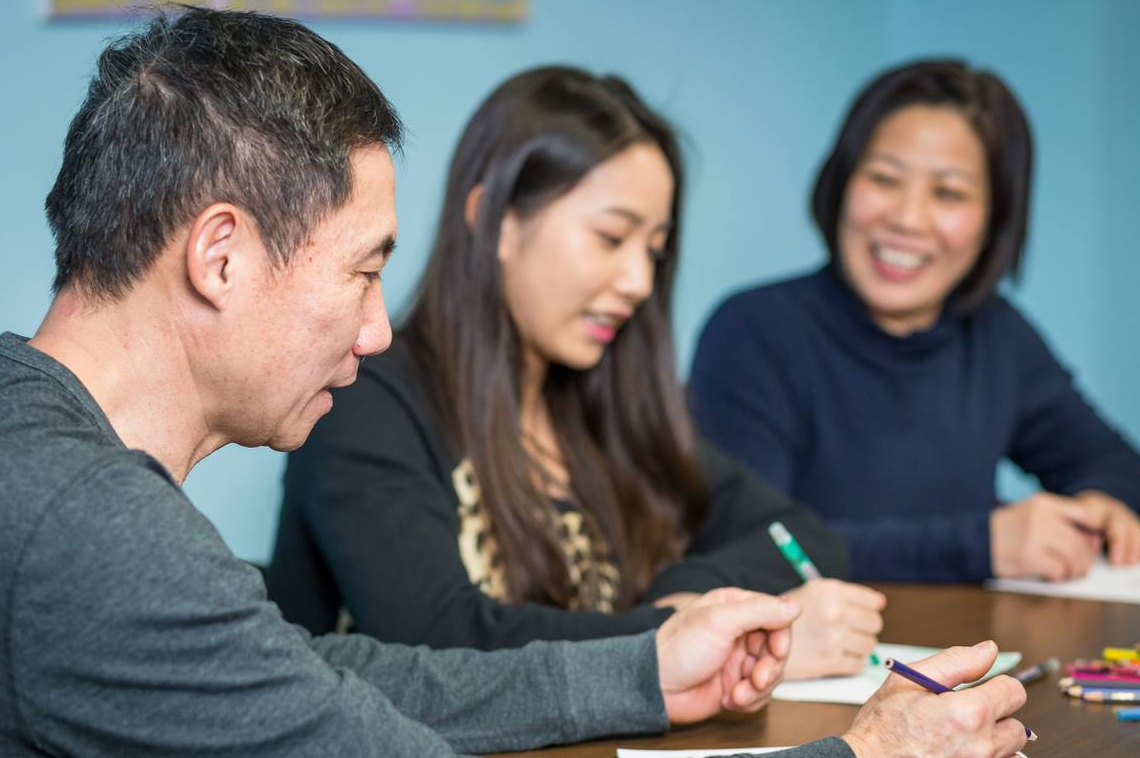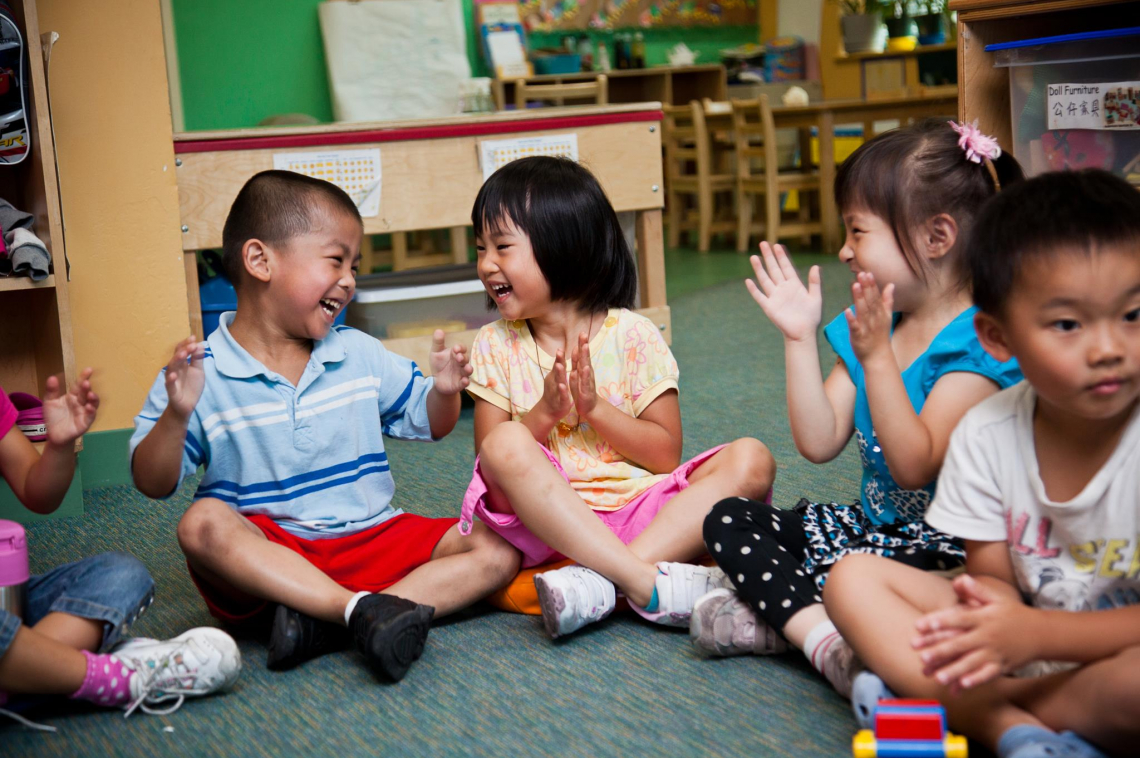


This is part two of a two part interview with the Pao Arts Center. Read part one here.
The Boston Chinatown Neighborhood Center received funding from ArtPlace in 2016 to create the Pao Arts Center, a communal arts center located inside the One Greenway building in Boston, Massachusetts’s historic Chinatown neighborhood. The building is located on a piece of land known as “Parcel 24,” which was once home to over 200 families before they were displaced when a highway was constructed through the area.
Today, the Pao Arts Center acts as a bridge to forge bonds between the neighborhood’s long-standing immigrant population and new residents. We spoke with Giles Li, executive director of the Boston Chinatown Neighborhood Center, and Cynthia Woo, Center Director.
ArtPlace: Who lives around the Chinatown Neighborhood Center, and how has it evolved?
Giles: Chinatown has existed in Boston since the 1870’s but it’s gone through different phases. It began because there were Chinese laborers that were not really welcomed with open arms in other parts of the city so they developed a tent city which eventually became what is now Chinatown. In 1903 there was a big immigration raid set up where about 100 men were deported because they weren’t carrying immigration papers. That was one of the earliest signals from the city that the people of Chinatown were not fully in control of their own future and the future of their community. Over the next 50 years, different development projects happened and the different ways the city interacted with the neighborhood reinforced that message. Part of what we’ve been trying to do through this project is to help the Chinatown community reclaim its own narratives and become a part of determining its own future again.
ArtPlace: What does the Chinatown community look like today?
Giles: The community has changed a little over the past several years. The 2010 census was the first time Chinatown was not a majority Asian. Typically, Chinatown has been a working-class, recent-immigrant community, but in the past several years we’ve seen the introduction of new development and an increase in high-rises with lots of market rate and luxury housing. There’s still a large presence of working class immigrant folks but there’s also an increased presence of white collar residents also.
ArtPlace: How does your programming deepen connection and community?
Giles: As a social services organization, we provide a range of family-centered programs from basically 3 months of age all the way on up. We serve about 2,600 people per year. About 60% of those are residents of Boston and 60% of that group are residents of Chinatown and the surrounding neighborhoods. We have a big presence with the community in Chinatown but we also see people from all over the city and across the region.
ArtPlace: Tell us more about your education and workforce programming for families
Giles: We recognize that the families and people we serve face challenges. Outside of the classroom and outside the programs they participate in, we want to be a part of helping them address those challenges, as well as helping them figure out how to leverage assets and relationships that they have outside BCNC to their benefit. We believe all families can thrive as long as they have access to the right support, and that when immigrant families are able to participate fully in American society, that’s a benefit to everybody in that society. So, as we started to really think about the things families need to be able to participate, we realized that in order to thrive, they need access to workforce development programs.
We’ve started offering a customer service skills class which works with higher level English students to give them skills that are transferrable, no matter where they want to work. You need to be able to interact with people, problem-solve, and identify what people are asking for and be able to interact with people in a way that’s personable.
Through that process of trying to educate people and give them those useful career skills, we’ve been able to place people at a range of different employers–restaurants, retail, insurance services… It’s been a really great program for us to be able to have that gives families a pathway to their own kind of sustainable future.
ArtPlace: What kind of cultural initiatives or art initiatives are you tapping into?
Giles: We have a very deep relationship with Bunker Hill Community College, the local college for adult learners. It seemed attainable to have Bunker Hill offer arts classes or theater classes–it makes the bridge feel strong for people who are part of BCNC’s programs. Bunker Hill is also going to be running a language lab in our space which gives their students a reason to come into Chinatown and a reason to come to our center as well as making that a resource available to our community to practice their language skills in a different setting. It makes that transition between community and college more comfortable and more natural.
There’s a reason that people who are part of this Chinese immigrant community seek services in Chinatown aside from just language and it has to do with not having to explain certain cultural things and knowing service providers have a comfort with your experiences and cultural norms.
We want to give a platform to artists to be able to engage with the community in a way that they’re also comfortable with. There’s a lot of great artists in our community who don’t necessarily feel that there’s a really great cultural sector in the area that’s their sector. We want to get rid of that wall. We want to make it feel like people who are from our community who are artists, art practitioners or just lovers of art also feel ownership over Boston in general and Boston’s art sector because it’s their art sector too.
ArtPlace: Would you say that the Center serves as a touchstone for the community?
Cynthia Woo: A touchstone is a very good way to put it. We’ve also been talking about the center as a bridge. In recent years there’s been a demographic shift in Chinatown, so we have this mix of people with all sorts of different socio-economic backgrounds and different understandings of what Chinatown is. For more recent residents, it might just be their home that they go to in their market rate condo but they don’t really interact as much with the community. Maybe they go out to eat or something but they don’t really feel a sense of the history of Chinatown or what they’re really a part of.
ArtPlace: How does arts figure into your youth and educational programming?
Cynthia: We are starting to offer enrichment classes on Saturdays to help supplement some of our afterschool programming. We’ve also been working with the Boston Family Services Department which offers a lot of resources for families. For example, they’re doing a series of literary workshops over the summer. I worked closely with their program director to figure out how artists from the Pao Center can interact with the department’s constituents so we can give these arts opportunities to them and broaden their holistic training. We will be hosting an Artist in Residency program and a gallery.
ArtPlace: What challenges have you faced?
Giles: There was initial doubt among our friends and supporters about the necessity of this kind of a project. I think people were so used to the BCNC being about childcare for low-income families, youth programs, and programs for first-generation college students. Some people don’t think of art as necessary. I think that was interesting, to kind of engage in those conversations with people who love and support BCNC but didn’t necessarily see why this was a project that we were so committed to.
The example that I’ve used is that I put my kids in arts classes every season of the year. Most of our donors wouldn’t question me putting my kids in arts classes. So I think that people know that arts are important, they understand that viscerally. We don’t need to explain it to them. But when we’re talking about low-income, working class, recent immigrant families that haven’t had access to as much formal education or don’t have as good jobs or don’t have as stable housing, people think “Oh, well they don’t deserve arts.” That they shouldn’t be looking for arts opportunities in their lives.
There’s nobody in our society that doesn’t deserve access to arts programming. We should look at access to art and arts experiences as just as important as access to good afterschool programming and access to good, affordable childcare. It’s a basic need that people have and it’s important that we don’t forget that when we’re talking about populations that face a range of other challenges.
ArtPlace: What would you say to those people? How do you convince someone who is of those beliefs that art is important and that art has demonstrable value when it comes to the stability of a community?
Giles: If we manage to help build the bonds between neighbors and community members stronger than ever by leveraging arts and cultural experiences, then that will create more opportunities for people to engage with employers and small businesses and workforce programs. The more connections that we build between people, the more opportunities there will be to uplift every part of what makes this neighborhood special and important.
-
Kayla Goggin is a freelance writer working for ArtPlace America. She can be reached atgogginkayla [at] yahoo.com ().





